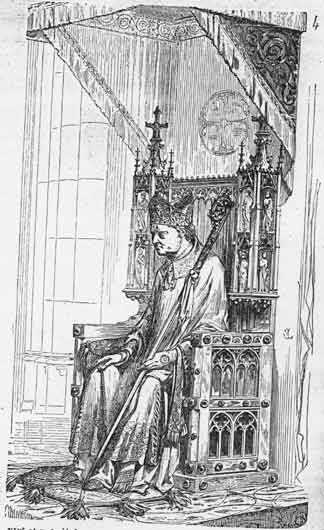 |
The
bishop's throne reflected the prestige of his position. When hearing appeals
and dispensing judgment, he sat in an episcopal throne, in full regalia,
miter on head and crosier (a staff derived from a shepherd's crook signify
his authority over his flock) in his right hand. His slippered feet
rested on a pillow. A towering Gothic throne with hanging curtain
at the top framed his body. Even when unoccupied, the Bishop's throne
was important. In the fifteenth century John Capgrave also lists that
plenary indulgences can be won by approaching the bishop's seat/throne
at St. John Lateran "for worship, prayer, or pilgrimage." (Viollet-le-Duc,
Mobilier 1:286)
Capgrave, John, Ye Solace
of Pilgrimes: A Description of Rome circa A.D. 1450 by John Capgrave,
an Austin Friar of King's Lynn, ed. C. A. Milles, London: Oxford University
Press, 1911, 71-76.
See
bishop's throne in the cathedral of Exter (Devon), executed 1312.
back to "worship"
|
